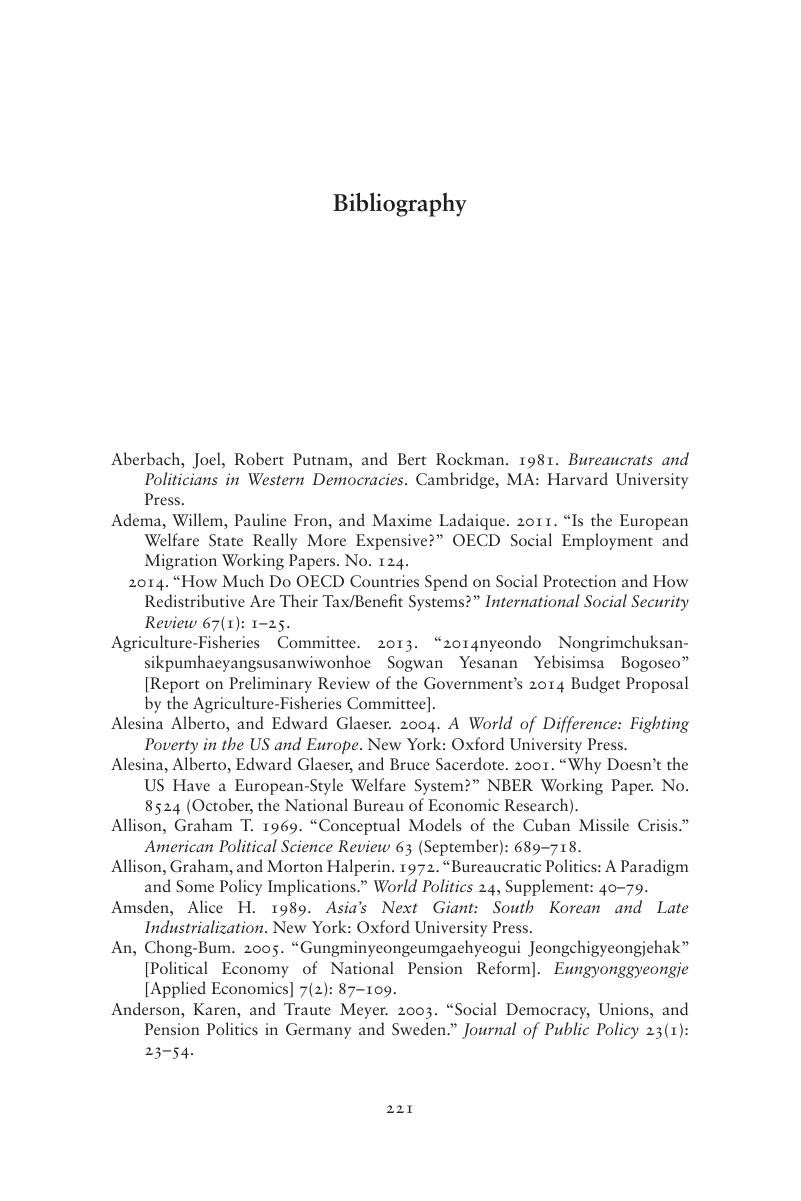Book contents
- The Political Economy of the Small Welfare State in South Korea
- The Political Economy of the Small Welfare State in South Korea
- Copyright page
- Dedication
- Contents
- Figures
- Tables
- Preface and Acknowledgments
- Abbreviations
- 1 Introduction
- 2 Theoretical Reinterpretation of the Small Welfare State in South Korea
- 3 The Emergence of the Small Welfare State under the Authoritarian Developmental State (1961–1987)
- 4 Democratization and Limited Welfare State Development under the Conservative Rule (1988–1997)
- 5 Economic Crisis, Power Shift, and Welfare Politics under the Kim Dae Jung Government (1998–2002)
- 6 Economic Unionism and the Limits of the Korean Welfare State under the Roh Moo Hyun Government (2003–2007)
- 7 Wind of Free Welfare and Tax Politics under the Returned Conservative Rule (2008–2017)
- 8 Conclusion
- Bibliography
- Index
- References
Bibliography
Published online by Cambridge University Press: 21 September 2017
- The Political Economy of the Small Welfare State in South Korea
- The Political Economy of the Small Welfare State in South Korea
- Copyright page
- Dedication
- Contents
- Figures
- Tables
- Preface and Acknowledgments
- Abbreviations
- 1 Introduction
- 2 Theoretical Reinterpretation of the Small Welfare State in South Korea
- 3 The Emergence of the Small Welfare State under the Authoritarian Developmental State (1961–1987)
- 4 Democratization and Limited Welfare State Development under the Conservative Rule (1988–1997)
- 5 Economic Crisis, Power Shift, and Welfare Politics under the Kim Dae Jung Government (1998–2002)
- 6 Economic Unionism and the Limits of the Korean Welfare State under the Roh Moo Hyun Government (2003–2007)
- 7 Wind of Free Welfare and Tax Politics under the Returned Conservative Rule (2008–2017)
- 8 Conclusion
- Bibliography
- Index
- References
Summary

- Type
- Chapter
- Information
- The Political Economy of the Small Welfare State in South Korea , pp. 211 - 220Publisher: Cambridge University PressPrint publication year: 2017

